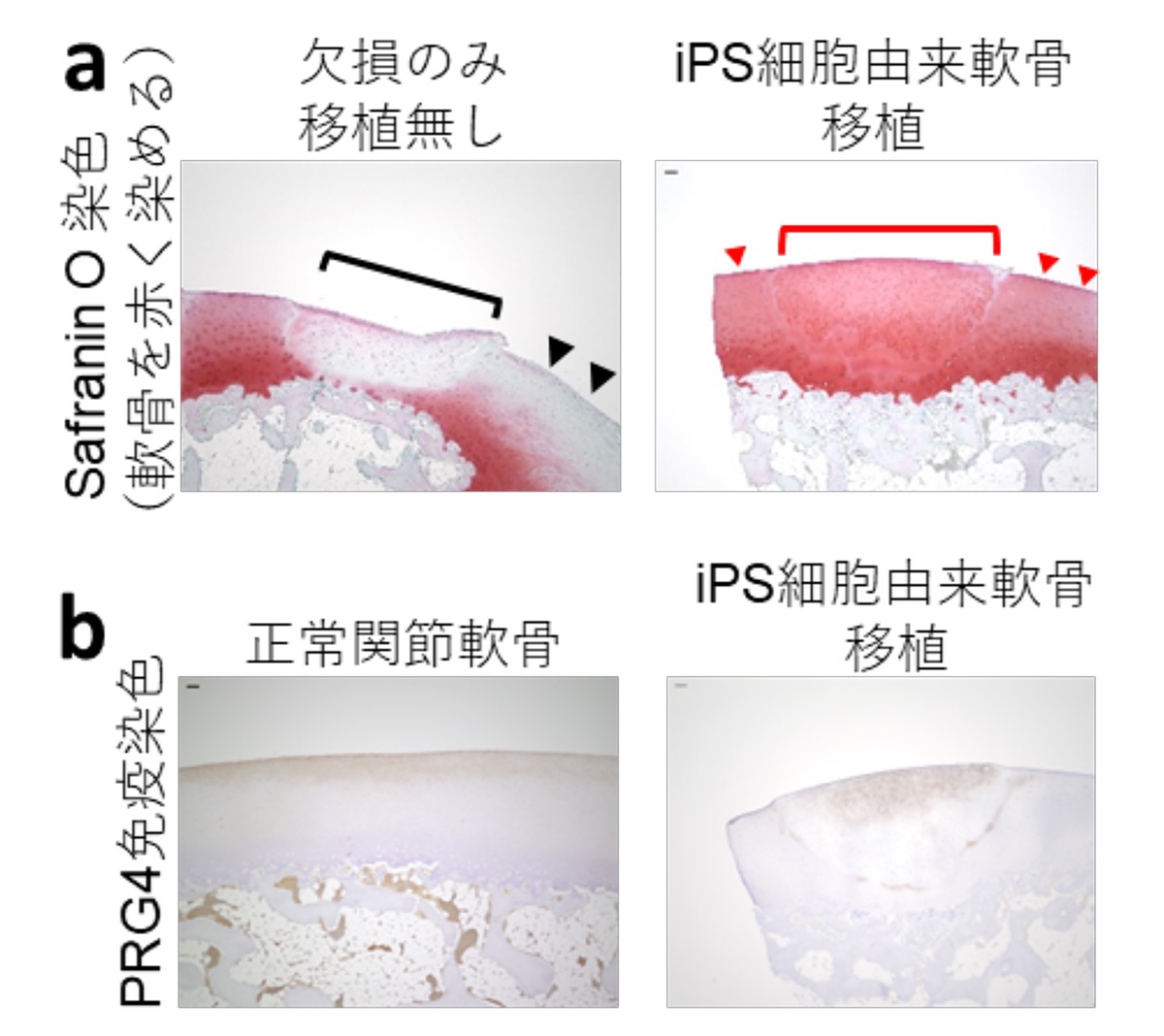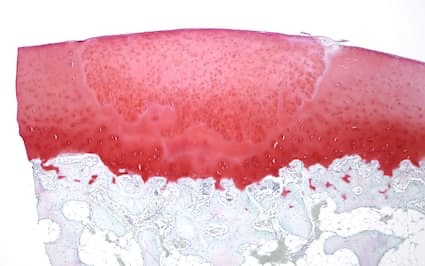

iPS細胞移植:再生猴膝軟骨!
-組織在 4 個月後建立,無免疫排斥-
大阪大學:
他們成功地將 iPS 細胞製成的軟骨組織移植到猴子的膝關節中。
Noriyuki Tsumaki 教授(生物化學):
2 月 20 日,它發表在科學雜誌《自然通訊》上。
四個月後,組織建立,確認無免疫排斥反應。
iPS細胞軟骨:
-植入猴子的膝關節-
當軟骨受損時,它不會自發修復。
預計這將導致新治療方法的發展。
Tsumaki 教授和他的同事正在進行“膝關節軟骨受損患者移植的臨床研究”。
研究團隊:
“直徑約2至3毫米的軟骨碎片”是由食蟹猴的iPS細胞產生的。
將片段植入猴關節:
碎片被植入另一隻軟骨受損的猴子關節中。
然後,組織通過粘附到原來存在的周圍軟骨上而再生。
– 日本經濟新聞
https://www.nikkei.com/article/DGXZQOUE206940Q3A220C2000000/
Greffe de cellules iPS : régénérer le cartilage du genou de singe !
-Tissu établi après 4 mois, pas de rejet immunitaire-
Université d’Osaka :
Ils ont réussi à “transplanter du tissu cartilagineux fabriqué à partir de cellules iPS dans les articulations du genou de singes”.
Professeur Noriyuki Tsumaki (Biochimie):
Le 20 février, il a été publié dans la revue scientifique Nature Communications.
Quatre mois plus tard, le tissu a été établi et aucun rejet immunitaire n’a été confirmé.
Cartilage des cellules iPS :
-Implanté dans l’articulation du genou d’un singe-
Lorsque le cartilage est endommagé, il ne se répare pas spontanément.
On s’attend à ce que cela conduise au développement de nouvelles méthodes de traitement.
Le professeur Tsumaki et ses collègues mènent “des recherches cliniques sur la transplantation chez les patients dont le cartilage de l’articulation du genou est endommagé”.
L’équipe de recherche:
Des « fragments de cartilage d’un diamètre d’environ 2 à 3 mm » ont été produits à partir de cellules iPS de singes cynomolgus.
Implantation de fragments dans des articulations de singe :
Des éclats ont été implantés dans l’articulation d’un autre singe avec du cartilage endommagé.
Ensuite, le tissu s’est régénéré en adhérant au cartilage environnant qui s’y trouvait à l’origine.
– Nihon Keizai Shimbun
Transplantation von iPS-Zellen: Affen-Knieknorpel regenerieren!
-Gewebebildung nach 4 Monaten, keine Immunabstoßung-
Universität Osaka:
Es gelang ihnen, „Knorpelgewebe aus iPS-Zellen in Kniegelenke von Affen zu transplantieren“.
Professor Noriyuki Tsumaki (Biochemie):
Am 20. Februar wurde es in der Fachzeitschrift Nature Communications veröffentlicht.
Vier Monate später wurde das Gewebe etabliert und es wurde keine Immunabstoßung bestätigt.
iPS-Zellknorpel:
-Ins Kniegelenk eines Affen implantiert-
Wenn Knorpel beschädigt ist, repariert er sich nicht spontan.
Es wird erwartet, dass dies zur Entwicklung neuer Behandlungsmethoden führen wird.
Professor Tsumaki und seine Kollegen führen “klinische Forschung zur Transplantation von Patienten mit geschädigtem Kniegelenkknorpel” durch.
Forschungsgruppe:
Aus iPS-Zellen von Cynomolgus-Affen wurden „Knorpelfragmente mit einem Durchmesser von etwa 2 bis 3 mm“ hergestellt.
Fragmente in Affengelenke implantieren:
Scherben wurden in das Gelenk eines anderen Affen mit beschädigtem Knorpel implantiert.
Dann regenerierte sich das Gewebe, indem es sich an den umgebenden Knorpel anheftete, der ursprünglich dort war.
– Nihon Keizai Shimbun
Engraftment of allogeneic iPS cell-derived cartilage organoid in a primate model of articular cartilage defect
Nature Communications
Abstract
Induced pluripotent stem cells (iPSCs) are a promising resource for allogeneic cartilage transplantation
to treat articular cartilage defects that do not heal spontaneously and often progress to debilitating conditions, such as osteoarthritis.
However, to the best of our knowledge, allogeneic cartilage transplantation into primate models
has never been assessed.
Here, we show that
allogeneic iPSC-derived cartilage organoids survive and integrate
as well as are remodeled as articular cartilage in a primate model of chondral defects in the knee joints.
Histological analysis
revealed that allogeneic iPSC-derived cartilage organoids in chondral defects elicited no immune reaction and directly contributed to tissue repair for at least four months.
iPSC-derived cartilage organoids
integrated with the host native articular cartilage and prevented degeneration of the surrounding cartilage.
Single-cell RNA-sequence analysis indicated that
iPSC-derived cartilage organoids differentiated after transplantation, acquiring expression of PRG4 crucial for joint lubrication.
Pathway analysis suggested the involvement of SIK3 inactivation.
Our study outcomes suggest that allogeneic transplantation of iPSC-derived cartilage organoids
may be clinically applicable for the treatment of patients with chondral defects of the articular cartilage;
however further assessment of functional recovery long term after load bearing injuries is required.